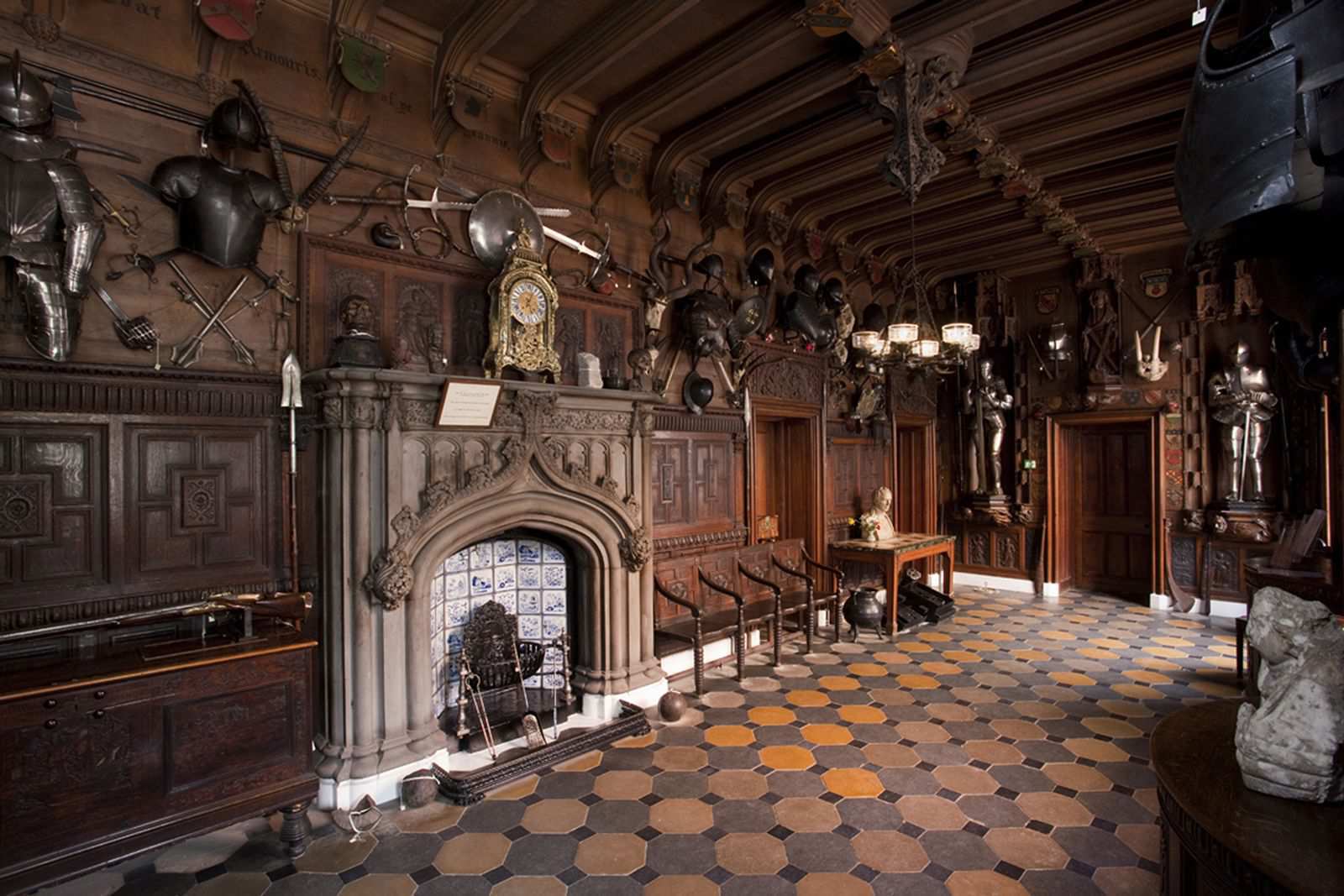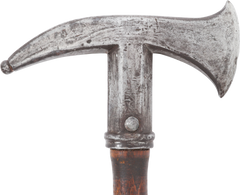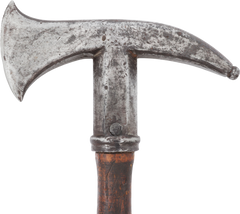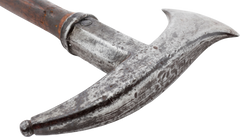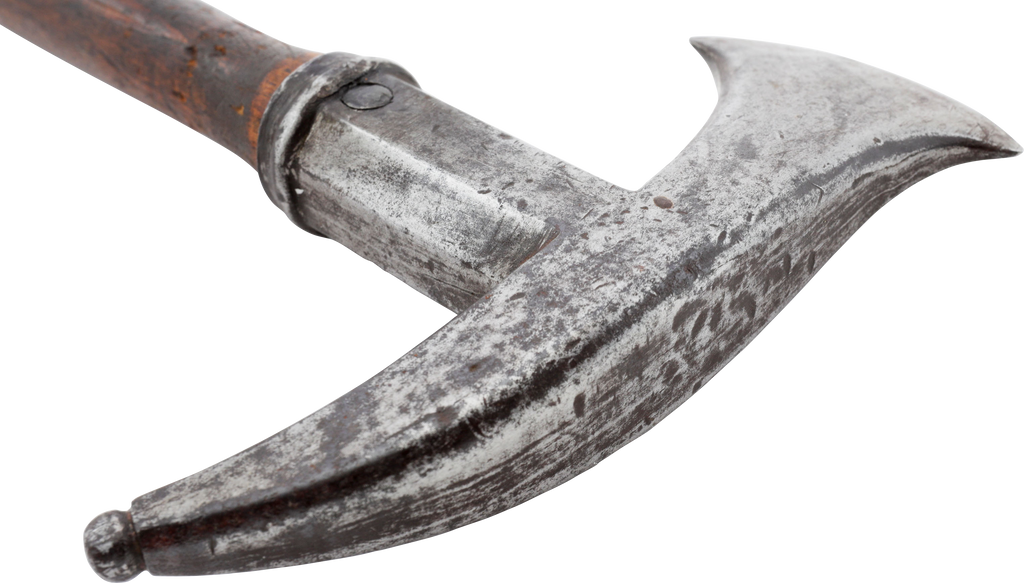While the battle axe was largely out of favor in Western Europe by 1600, it remained popular in Eastern Europe including Poland, Hungary, and Northern Italy, due to differing fighting techniques, greatly influenced by battle with the Ottoman Empire. This example is from the Republic of Venice which occupied the northeastern part of the Italian peninsula, the north Adriatic and the east Adriatic coast. It is 28 ½” long with a forged iron head configured with a thick crescent axe bit, opposite a curved pyramidal form spike truncated with a bun shape. The hardwood haft is beautifully worked with a banded and reeded grip which accommodated a one or two hand grip. The haft has acquired what is known in the antique furniture trade as a venetian patina, specific to the atmospheric conditions of the region. The blunting of the back spike allows for the delivery of a devastating or fatal blow without the risk of impalement. If such a blow to an iron helmet resulted in the helmet being stuck to the weapon, the weapon would be useless until it was dislodged. In a melee, the disabling of the primary weapon, even for a second, could be fatal. Rare.




